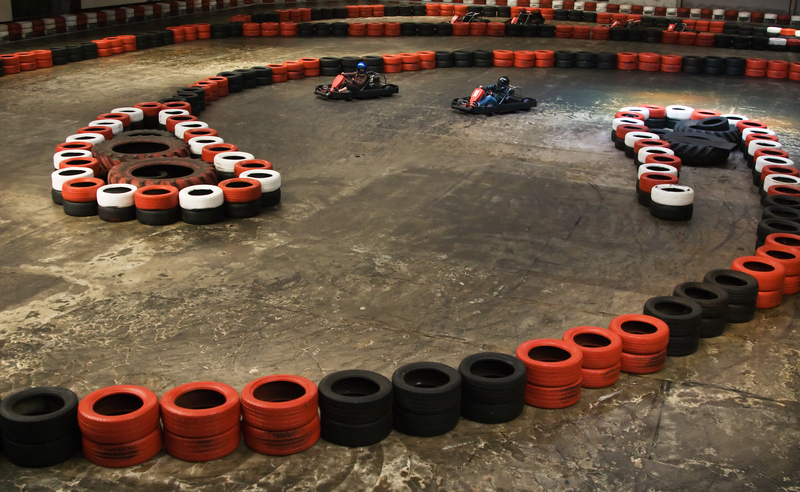A Second Chance for Your Old Pots and Pans Through Recycling
Have you accumulated a stash of battered pots and pans over the years? Perhaps you're wondering if there's any sustainable way to dispose of these once-trusty kitchen companions. Recycling old pots and pans isn't just possible--it's a responsible choice that benefits your community, the environment, and potentially your own wallet. If you're searching for ways to give your cookware a second life, you've come to the right place. This comprehensive guide will show you how to recycle metal cookware, creative reuse ideas, and where to find recycling centers near you. Let's embark on a journey towards eco-conscious kitchen living!

Why Should You Recycle Old Pots and Pans?
Before tossing your crusty skillet or warped pot into the trash, it's essential to understand why recycling cookware matters so much in today's world.
- Environmental Impact: Discarded kitchen items take up space in landfills and can take centuries to break down, especially stainless steel and aluminum cookware.
- Resource Conservation: Recycling metals means fewer raw materials are needed to manufacture new products, reducing mining and pollution.
- Waste Reduction: Less waste in landfills translates to fewer greenhouse gases and reduced landfill expansion.
- Economic Benefits: Salvaged metals from your old pots support local recycling centers and generate jobs.
By giving your old cookware new life, you're contributing to a cycle of sustainability and resourcefulness.
Types of Pots and Pans Suitable for Recycling
Most of your cookware is likely suitable for recycling, but not every piece is created equal. Here's a quick overview:
- Stainless Steel Cookware: This is highly recyclable and in demand at recycling centers.
- Aluminum Pots and Pans: Lightweight and infinitely recyclable, aluminum is a recycling superstar.
- Copper Pans: Valued for their high metal content, copper pieces are easily recycled.
- Cast Iron Skillets: These sturdy pans can be melted down and reused.
- Nonstick (Teflon-coated) Cookware: Trickier to recycle but not impossible--specialized centers may accept them after the coating is removed.
Note: Keep in mind that ceramic, glass, and some coated cookware may not be accepted at all recycling facilities. Always check with your local center before dropping items off.
How to Prepare Your Old Cookware for Recycling
To ensure your old pots and pans can be recycled efficiently, preparation is key. Here are the essential steps:
1. Clean Thoroughly
- Remove any food residue or grease. Most centers won't accept dirty cookware.
- For stuck-on grime, soak in hot, soapy water before scrubbing.
2. Separate Materials
- If your pan has a plastic handle, remove it if possible. Handles, lids, or silicone pieces often need to be recycled separately.
- Lids made of glass or plastic may not be recyclable where you bring your metal items.
3. Check for Coatings
- Nonstick pans may need special handling due to Teflon or ceramic coatings. Some recycling centers refuse them altogether; others may require you to remove the coating.
4. Bundle Responsibly
- Stack pans together or place smaller items inside a larger pot for easier transport and processing.
By taking these steps, you improve the odds of your kitchenware being effectively recycled rather than turned away or trashed.
Where to Recycle Old Pots and Pans Near You
The success of your recycling efforts depends on finding the right facility. Here are the most common options:
1. Local Scrap Metal Facilities
Most scrap yards and metal recyclers accept pots and pans made of stainless steel, copper, aluminum, and cast iron. They can break down mixed materials and ensure the metals are reused in new products. Consider calling in advance to confirm what they accept.
2. Municipal Recycling Centers
Check your city's recycling regulations--some municipalities have dedicated drop-off points for metal household goods. Refer to their materials guidelines (often posted online) to determine if they accept kitchen cookware.
3. Appliance or Electronics Recycling Events
Occasionally, community recycling days or "hard-to-recycle" events will take household metals, including cookware. These are especially useful for pans that contain mixed materials or coatings.
4. Retail Take-Back Programs
Some retailers and kitchen stores offer take-back programs for used cookware when you buy a replacement. This is a convenient option if you're upgrading your kitchenware.
5. Donation Centers
If your pans are still usable, consider donating to thrift stores, shelters, or community kitchens. Organizations such as Goodwill or the Salvation Army often accept serviceable cookware.
To find the nearest center, search online for "recycling old pots and pans near me," check local government websites, or use apps like Earth911 or iScrapApp.
Creative Ways to Reuse and Repurpose Old Pots and Pans
Sometimes, recycling isn't the only option. Repurposing old cookware can be a fun, sustainable way to minimize waste and add charm to your home or garden.
1. Turn Pans into Planters
- Stainless steel and cast iron pots make excellent indoor or outdoor planters for herbs, succulents, or flowers. Drill drainage holes and add gravel for best results.
2. Craft a Bird Feeder or Bath
- Hang a shallow frying pan from a tree with sturdy twine, or rest on a stand as a rustic bird bath.
3. Wall Art and Clocks
- Old lids and pans can become quirky wall decor or the base for a DIY kitchen clock. Paint, stencil, or embellish for added flair.
4. Organizers and Storage
- Attach pots to a wall or under a shelf for storing small kitchen tools, utensils, or craft supplies.
5. Garden Tools or Sculptures
- With some creativity, pans can become part of garden art, plant markers, or even scarecrow accessories!
These creative recycling ideas for pots and pans let you personalize your space while reducing your carbon footprint.
Frequently Asked Questions about Recycling Pots and Pans
Can nonstick pans be recycled?
Yes, but with caveats. Many recycling centers will only accept nonstick pans if the Teflon or ceramic coating is removed. Specialized facilities may handle them, but it's always best to call ahead.
Is it okay to throw old cookware in the regular recycling bin?
No. In most cases, curbside recycling is not set up for metal cookware. These items must go to a scrap yard or metal-specific drop-off point to avoid contaminating the standard recycling stream.
What if my pans are rusty or damaged?
No problem! Scrap metal recyclers accept cookware in any condition, so rust, warping, or burn marks usually aren't an issue.
Can I get paid for recycling pots and pans?
Sometimes. Large amounts of metal cookware (especially copper or aluminum) may fetch a small payout at scrap yards. However, single items likely won't add up to much cash.
Is upcycling an eco-friendly alternative?
Absolutely. Giving old pots and pans a new purpose by upcycling keeps them out of landfills, reduces demand for new products, and can add creativity to your home.
The Life Cycle of Recycled Cookware
Ever wondered what happens after your cookware leaves your home? Here's the general recycling journey for metal pots and pans:
- Collection: Collected at scrap yards, recycling centers, or through donation programs.
- Sorting: Items are sorted by material--aluminum, stainless steel, copper, etc.
- Shredding & Processing: The items are shredded, processed, and cleaned of contaminants.
- Melting: Metals are melted down and formed into ingots or sheets.
- Re-Manufacturing: The recycled metal becomes new products--potentially more pans, car parts, building materials, and more!
This closed-loop process preserves resources and dramatically lowers energy consumption compared to mining and processing new metals.
Benefits of Recycling Cookware
- Reduces Landfill Waste: Prolonging the life of metals keeps heavy, non-degradable cookware out of sprawling landfills.
- Saves Energy: Recycling metals can use up to 95% less energy than mining and refining new ones.
- Limits Pollution: Fewer toxins are released into air, water, and soil when items are recycled rather than dumped or incinerated.
- Conserves Raw Materials: Reusing existing resources reduces the need for further extraction from the earth.

Tips for Sustainable Kitchenware Replacement
When it's time to replace old pots and pans, make informed choices for a greener kitchen:
- Look for Recycled Content: Some cookware manufacturers now use recycled metals--check product labels.
- Avoid Disposable Items: Opt for durable, multi-use pots over cheap, non-repairable alternatives.
- Research Brand Policies: Some brands offer take-back or recycling programs for their products.
- Choose Non-Coated or Coating-Free Products: These are easier to recycle and safer in the long run.
Making responsible purchases and ensuring proper end-of-life disposal can make your kitchen part of a circular economy.
Conclusion: Give Your Kitchenware a Second Life!
Your old pots and pans deserve a second chance. Through proper recycling or clever upcycling, you help reduce landfill waste, save resources, and inspire others toward environmentally friendly living. The next time you update your kitchen arsenal, remember: those battered pots and worn-out pans could be tomorrow's new products--or tomorrow's garden art! Take the extra step today and discover the power of recycling cookware.
Ready to recycle? Start searching for local scrap metal centers, retail take-back programs, or unleash your creativity with a fun upcycling project--the environment (and your home) will thank you!